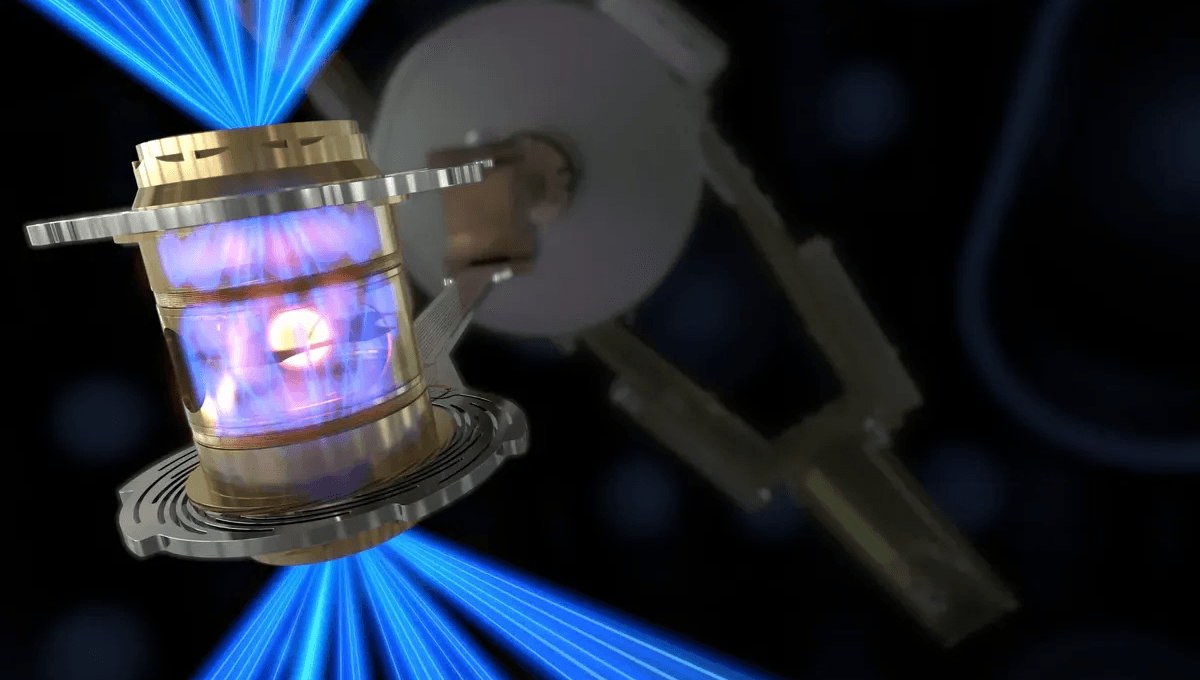
The age of nuclear fusion is upon us. After decades of work by thousands of scientists, this fabled tree has started bearing its fruit: it is possible to have a fusion reaction on Earth that releases more energy than what is put in. The breakthrough, announced in late 2022, has now been confirmed. Fusion breakeven has happened. And that is not all – a series of papers highlight how there’s a lot to be hopeful about too.
Nuclear fusion is constantly happening in stars. Lighter elements, usually hydrogen, are fused into heavier ones. This reaction releases a lot of energy that goes on to power the stars. A consequence dear to us in the case of the Sun is that part of that energy powers life on Earth. Since we worked out how fusion works last century, humans have wondered if we can control it and use it for ourselves. The answer so far has been “sort of”.
In the lab, we can’t reproduce the conditions that are found at the center of stars: the enormous pressures and high temperatures that push elements to naturally fuse, releasing energy. To achieve that in the lab, we need to provide much higher temperatures – and that requires energy. So the goal for quite a while has been to get a fusion reaction that produces more energy than it needs to get started, with different designs aiming to make that happen.
The first one to have crossed that line is the National Ignition Facility (NIF) experiment. This approach is known as Inertial Fusion. Powerful lasers are sent into a capsule (known as a hohlraum) that contains a pellet that has two types of heavy hydrogen. The lasers interact with the hohlraum, releasing an incredible amount of x-rays that slam onto the fuel, starting the fusion process.
On December 5, 2022, the system released 3.1 MegaJoules of fusion yield. Given that the laser pulse required 2.05 MegaJoules, the system produced more than 150 percent of the energy needed to start it.
Having surpassed the “scientific breakeven” is truly a breakthrough – but it is not enough for a full-scale power plant. The yield needs to be over 10 times the initial energy to make sense. For this reason, the team has taken the time to study in detail everything that happened 14 months ago. One intriguing event was that the fusion led to a reheating of the hohlraum to energies higher than what the laser could have supplied.
“In summary, we have observed for the first time substantial reheating of indirect-drive hohlraums from burning fusion capsules, at levels comparable, and exceeding, the original NIF laser drive,” the scientists wrote in one of the five papers presented today.
The ability to create a stable burning plasma might be the game-changer scenario to bring Inertial Fusion to a real-life power plant.
Three papers published today, including the one quoted above, are published in the journal Physical Review Letters (here, here, and here). The other two are published in the journal Physical Review E (here and here).
Source Link: Breakthrough Nuclear Fusion Experiment Confirmed To Have Produced More Energy Than Was Put In